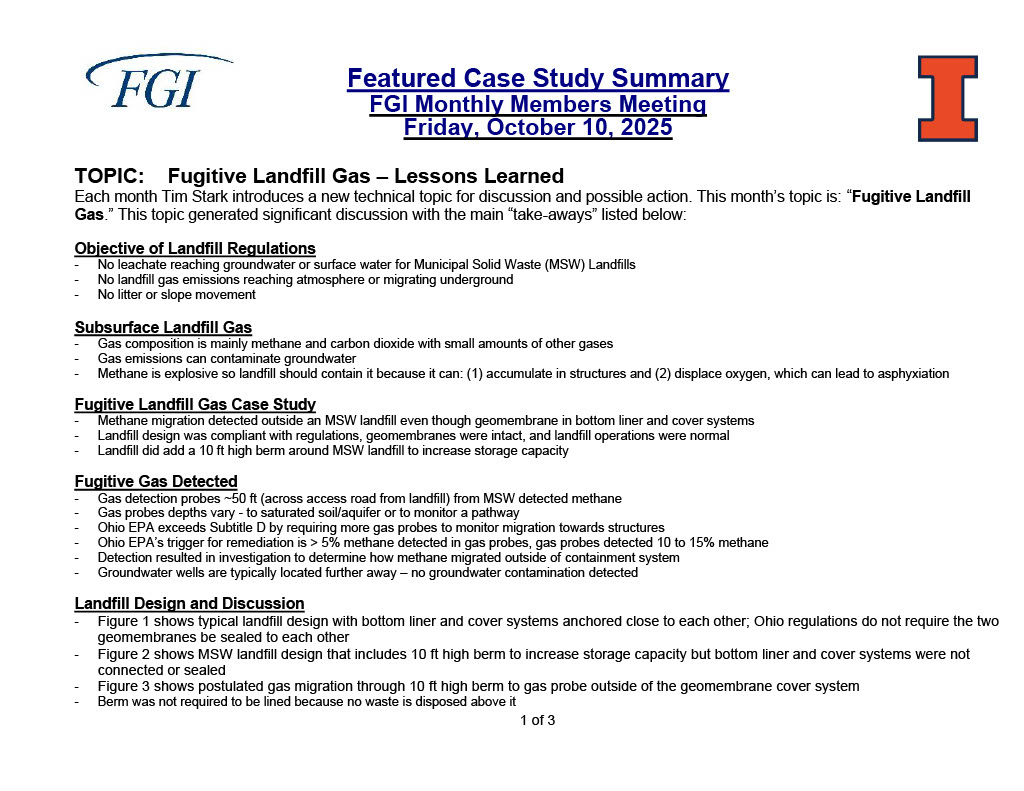
TOPIC: Fugitive Landfill Gas – Lessons Learned
Each month Tim Stark introduces a new technical topic for discussion and possible action. This month’s topic is: “Fugitive Landfill Gas.” This topic generated significant discussion with the main “take-aways” listed below:
Objective of Landfill Regulations
- No leachate reaching groundwater or surface water for Municipal Solid Waste (MSW) Landfills
- No landfill gas emissions reaching atmosphere or migrating underground
- No litter or slope movement
Subsurface Landfill Gas
- Gas composition is mainly methane and carbon dioxide with small amounts of other gases
- Gas emissions can contaminate groundwater
- Methane is explosive so landfill should contain it because it can: (1) accumulate in structures and (2) displace oxygen, which can lead to asphyxiation
Fugitive Landfill Gas Case Study
- Methane migration detected outside an MSW landfill even though geomembrane in bottom liner and cover systems
- Landfill design was compliant with regulations, geomembranes were intact, and landfill operations were normal
- Landfill did add a 10 ft high berm around MSW landfill to increase storage capacity
Fugitive Gas Detected
- Gas detection probes ~50 ft (across access road from landfill) from MSW detected methane
- Gas probes depths vary - to saturated soil/aquifer or to monitor a pathway
- Ohio EPA exceeds Subtitle D by requiring more gas probes to monitor migration towards structures
- Ohio EPA’s trigger for remediation is > 5% methane detected in gas probes, gas probes detected 10 to 15% methane
- Detection resulted in investigation to determine how methane migrated outside of containment system
- Groundwater wells are typically located further away – no groundwater contamination detected
Landfill Design and Discussion
- Figure 1 shows typical landfill design with bottom liner and cover systems anchored close to each other; Ohio regulations do not require the two geomembranes be sealed to each other
- Figure 2 shows MSW landfill design that includes 10 ft high berm to increase storage capacity but bottom liner and cover systems were not connected or sealed
- Figure 3 shows postulated gas migration through 10 ft high berm to gas probe outside of the geomembrane cover system
- Berm was not required to be lined because no waste is disposed above it
For Full article, including images, click Download